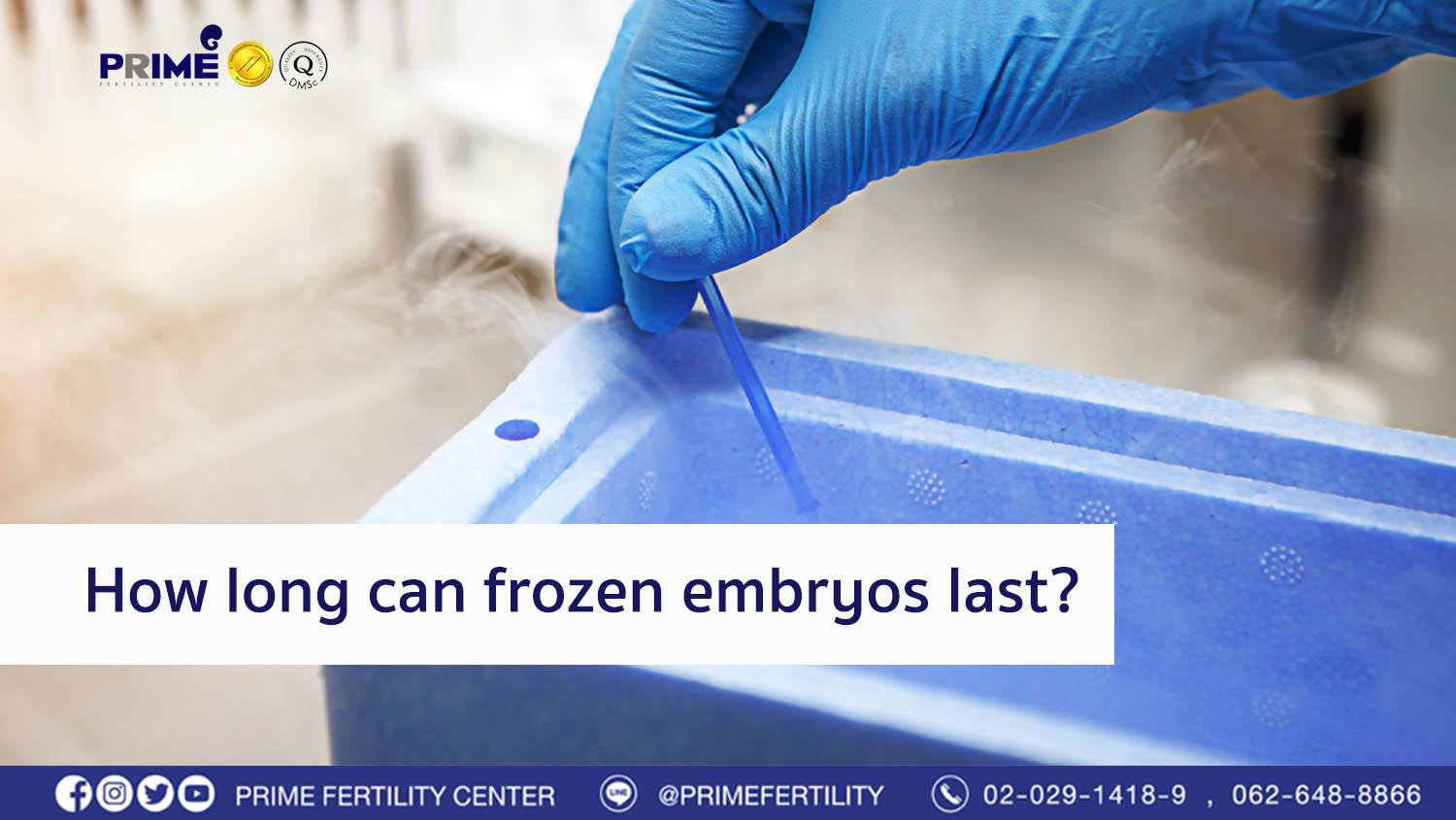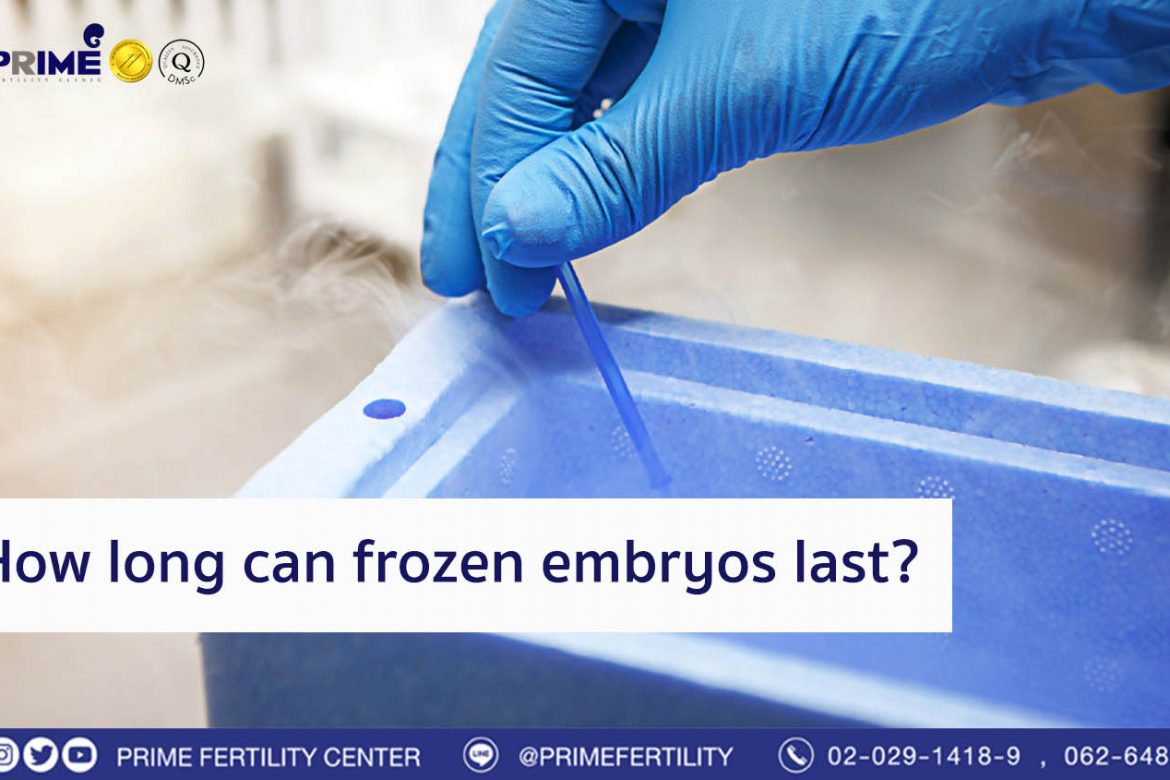Fundamentally, embryos can be frozen as long as the cryoprotectant solution is available. Studies found the longest embryo freezing period is 14-year storage. After thawing and transfer, using this 14-year frozen embryo can make a success as well.

Embryo freezing is to immerse embryos in cryoprotectant solution which helps to prevent the ice crystals are formed inside the embryo’s cells. After that, the embryos will be frozen in liquid nitrogen tank where they will be stored as long as needed.
Embryo Freezing Procedures:
- Embryologists move out embryos and soak them in the cryoprotectant solution under the appropriate duration.
- After that, embryos are stored in liquid nitrogen at -196 degrees Celsius inside a nitrogen tank where we put embryos into the straws and each straw contains only 1 embryo. At the end of each straw, there is a label showing embryo number, patient’s name, surname, hospital number, date of birth, freezing date as well as the stage of embryo development in order to demonstrate the age of frozen embryos at the time of freezing.
- Once we complete all information on the adhesive label sticker, we will wrap it around the straw. This process will help embryologists to recognize and identify the embryos accurately.
Embryologists are working in pairs for the purpose of a double-check to ensure the accuracy. We also need to sign, recheck as a witness and approve each other at every time and every single process in order to avoid any mistakes.
In case patients prefer to end the freezing service of the undesirable embryos, they will need to submit the consent form together with their autograph in order to give the permission on how the clinic can proceed their undesirable embryos later on. Either discard or donate them to the scientist for the future studies. This process is required by law.
At Prime Fertility Clinic, we have the embryologist team together with various equipment for providing up-to-date and standardized embryo culture and embryo freezing. Therefore, every process can be reliable accordingly.




